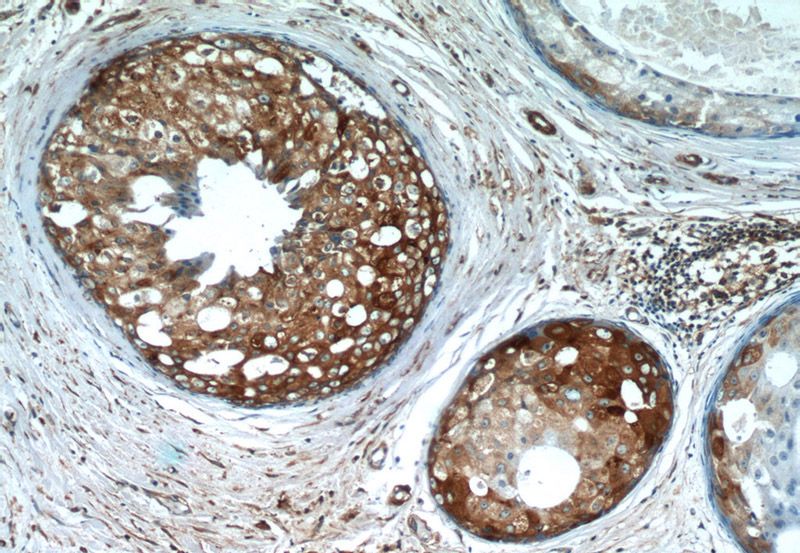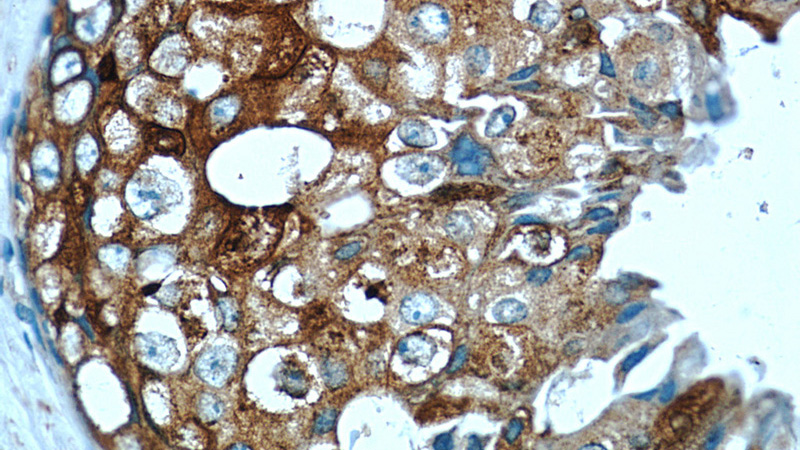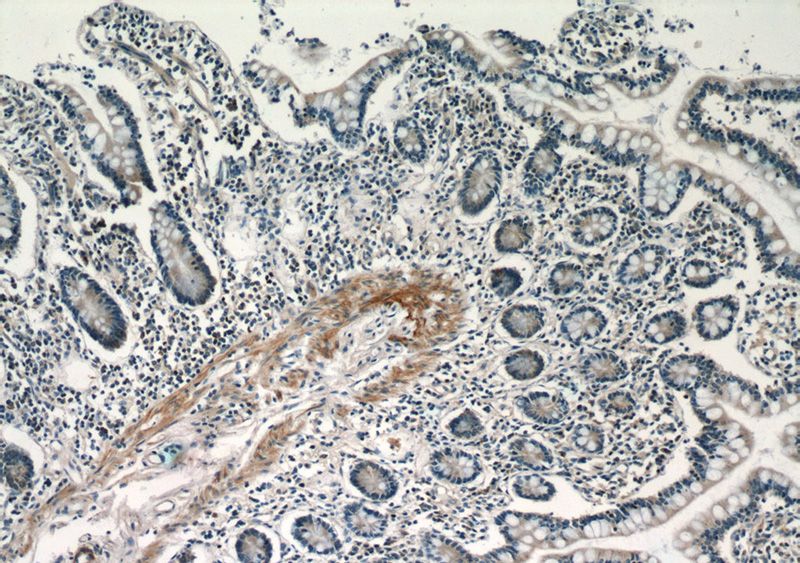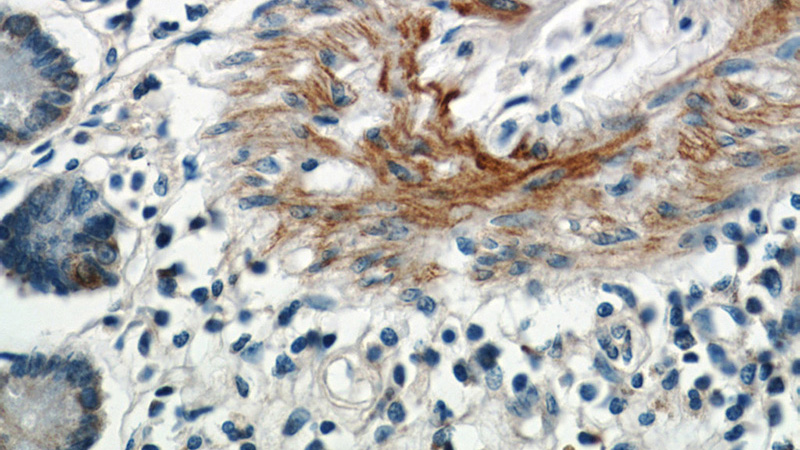-
Product Name
MGP antibody
- Documents
-
Description
MGP Rabbit Polyclonal antibody. Positive IHC detected in human breast cancer tissue, human small intestine tissue.
-
Tested applications
ELISA, IHC
-
Species reactivity
Human,Mouse,Rat; other species not tested.
-
Alternative names
GIG36 antibody; matrix Gla protein antibody; MGLAP antibody; MGP antibody; NTI antibody
-
Isotype
Rabbit IgG
-
Preparation
This antibody was obtained by immunization of MGP recombinant protein (Accession Number: NM_000900). Purification method: Antigen affinity purified.
-
Clonality
Polyclonal
-
Formulation
PBS with 0.1% sodium azide and 50% glycerol pH 7.3.
-
Storage instructions
Store at -20℃. DO NOT ALIQUOT
-
Applications
Recommended Dilution:
IHC: 1:20-1:200
-
Validations

Immunohistochemistry of paraffin-embedded human breast cancer tissue slide using Catalog No:112604(MGP Antibody) at dilution of 1:50 (under 10x lens)

Immunohistochemistry of paraffin-embedded human breast cancer tissue slide using Catalog No:112604(MGP Antibody) at dilution of 1:50 (under 40x lens)

Immunohistochemistry of paraffin-embedded human small intestine tissue slide using Catalog No:112604(MGP Antibody) at dilution of 1:50 (under 10x lens)

Immunohistochemistry of paraffin-embedded human small intestine tissue slide using Catalog No:112604(MGP Antibody) at dilution of 1:50 (under 40x lens)
-
Background
Matrix Gla protein (MGP), a vitamin K-dependent protein, is recognized as a calcification inhibitor in vascular tissue. Defects in MGP are the cause of Keutel syndrome (KS), which is an autosomal recessive disorder characterized by abnormal cartilage calcification, peripheral pulmonary stenosis neural hearing loss and midfacial hypoplasia.
-
References
- Urganus AL, Zhao YD, Pachman LM. Juvenile dermatomyositis calcifications selectively displayed markers of bone formation. Arthritis and rheumatism. 61(4):501-8. 2009.
- Mutch DM, Rouault C, Keophiphath M, Lacasa D, Clément K. Using gene expression to predict the secretome of differentiating human preadipocytes. International journal of obesity (2005). 33(3):354-63. 2009.
- Zhao Y, Urganus AL, Spevak L. Characterization of dystrophic calcification induced in mice by cardiotoxin. Calcified tissue international. 85(3):267-75. 2009.
- Santa-Maria I, Avila J, Rabano A. Differential gene expression analysis of human entorhinal cortex support a possible role of some extracellular matrix proteins in the onset of Alzheimer disease. Neuroscience letters. 468(3):225-8. 2010.
- Singh SR, Billington CK, Sayers I, Hall IP. Can lineage-specific markers be identified to characterize mesenchyme-derived cell populations in the human airways? American journal of physiology. Lung cellular and molecular physiology. 299(2):L169-83. 2010.
- Yoshimura K, Takeuchi K, Nagasaki K. Prognostic value of matrix Gla protein in breast cancer. Molecular medicine reports. 2(4):549-53. 2011.
- Chang K, Weiss D, Suo J. Bone morphogenic protein antagonists are coexpressed with bone morphogenic protein 4 in endothelial cells exposed to unstable flow in vitro in mouse aortas and in human coronary arteries: role of bone morphogenic protein antagonists in inflammation and atherosclerosis. Circulation. 116(11):1258-66. 2007.
- Yang K, Lu W, Jia J. Noggin inhibits hypoxia-induced proliferation by targeting store-operated calcium entry and transient receptor potential cation channels. American journal of physiology. Cell physiology. 308(11):C869-78. 2015.
Related Products / Services
Please note: All products are "FOR RESEARCH USE ONLY AND ARE NOT INTENDED FOR DIAGNOSTIC OR THERAPEUTIC USE"
